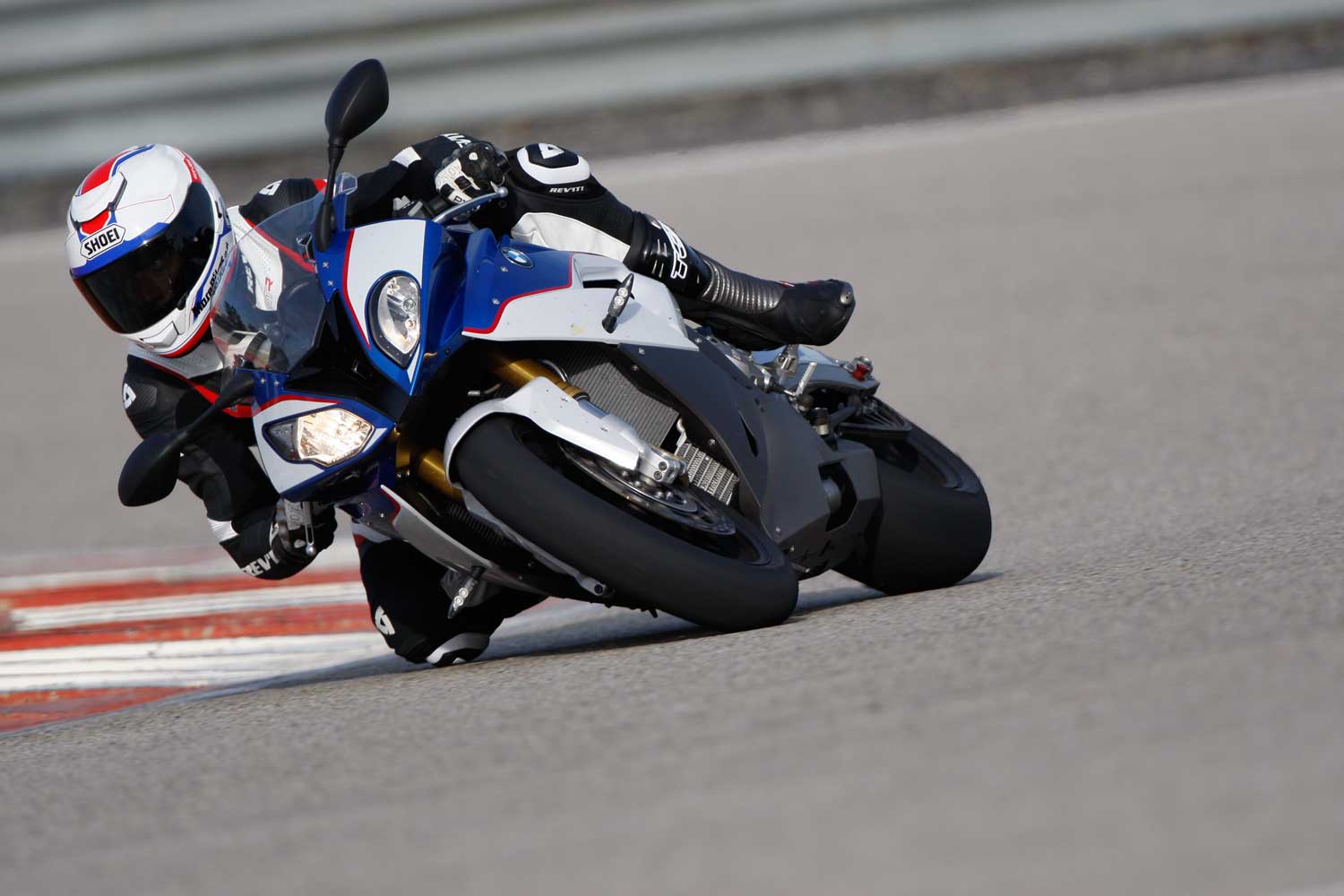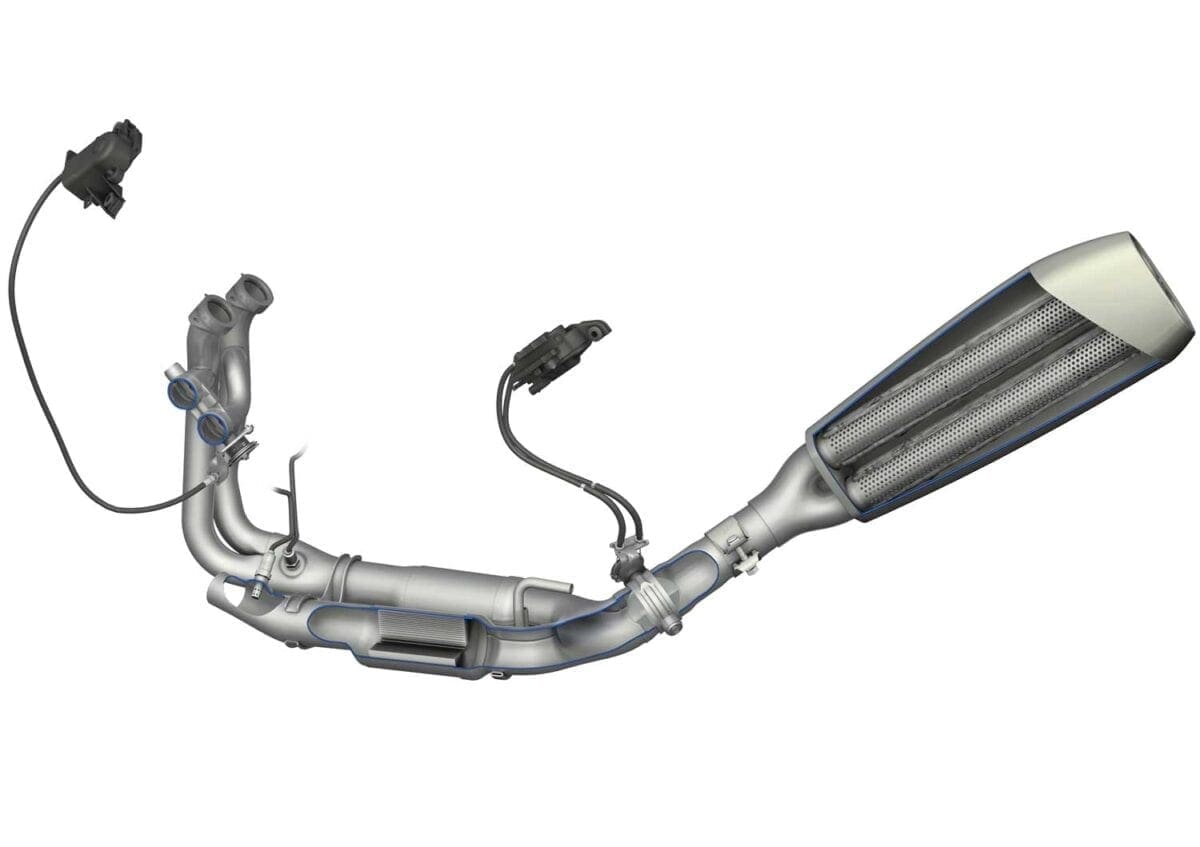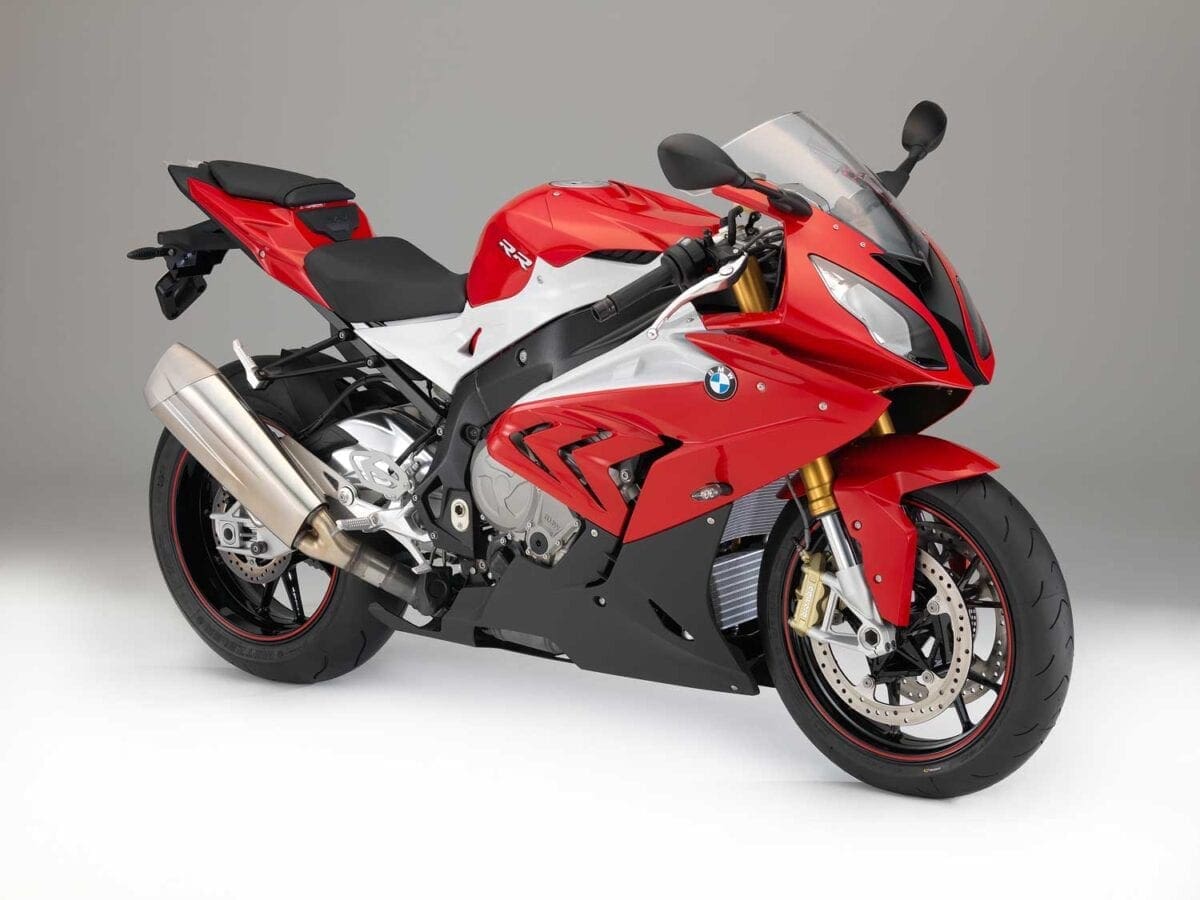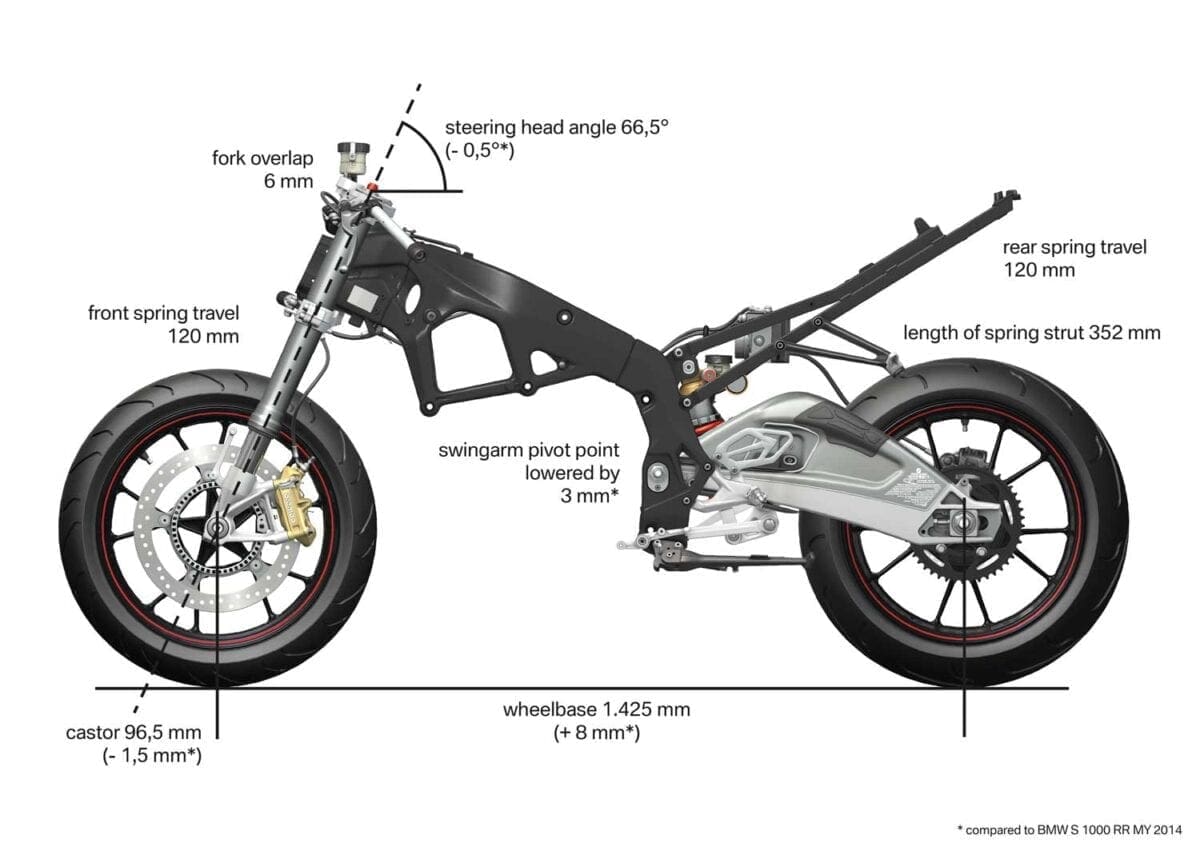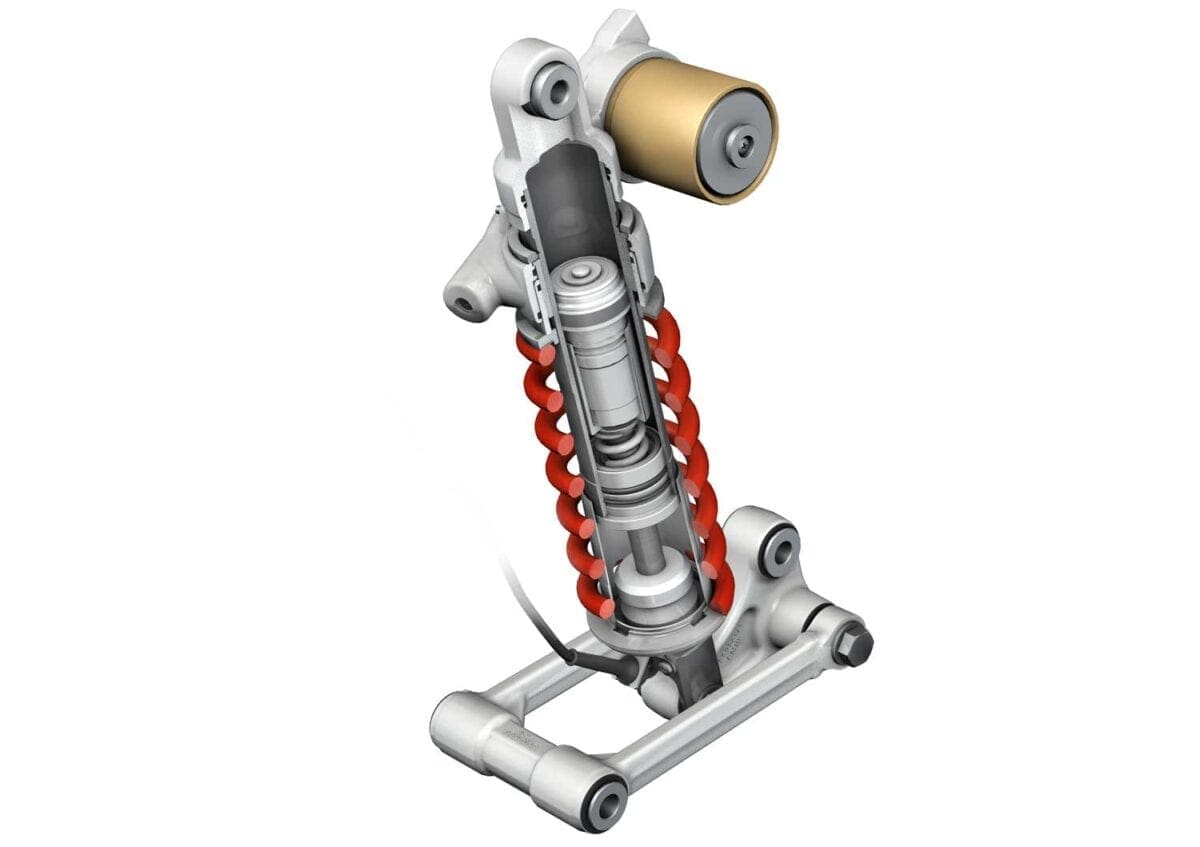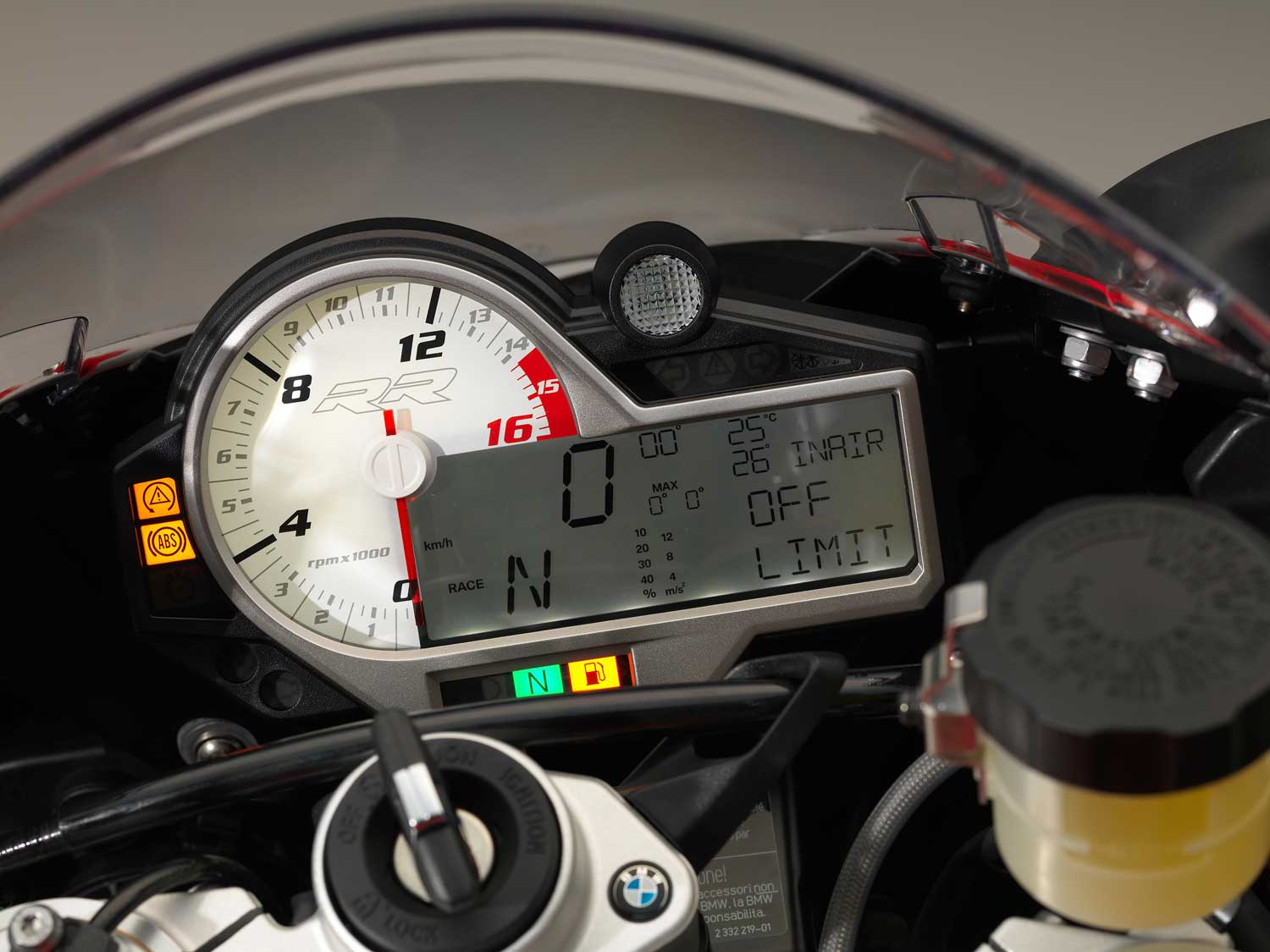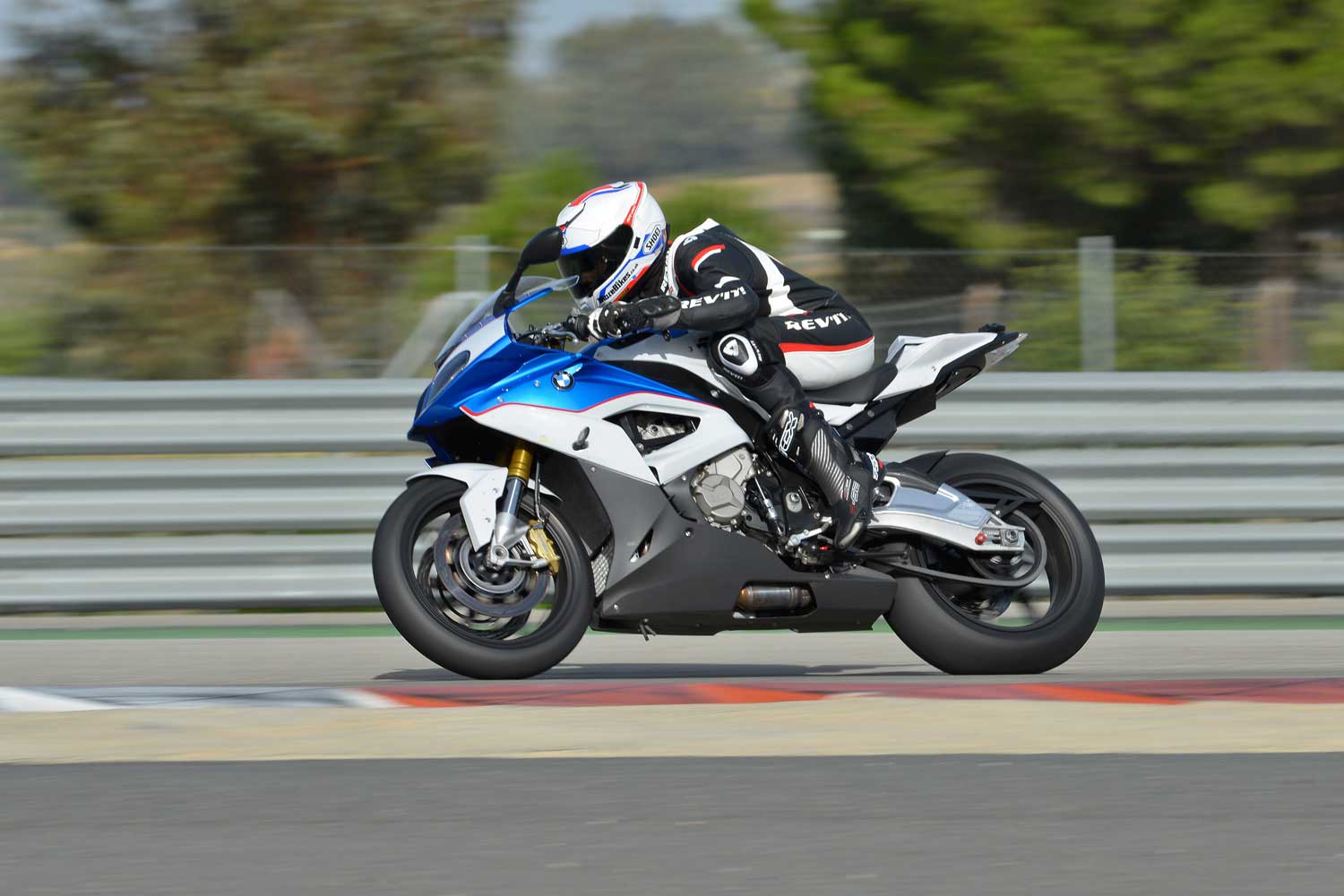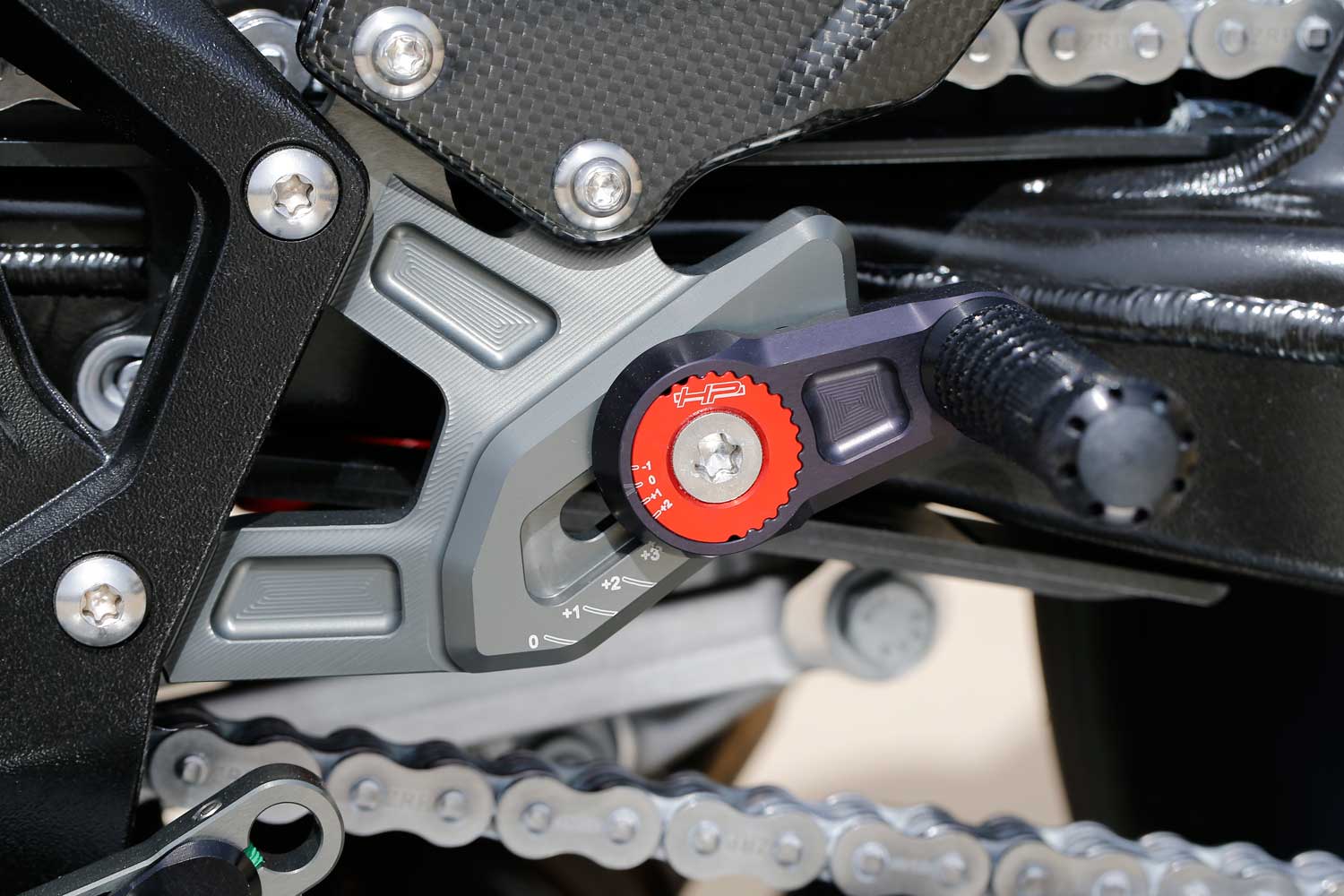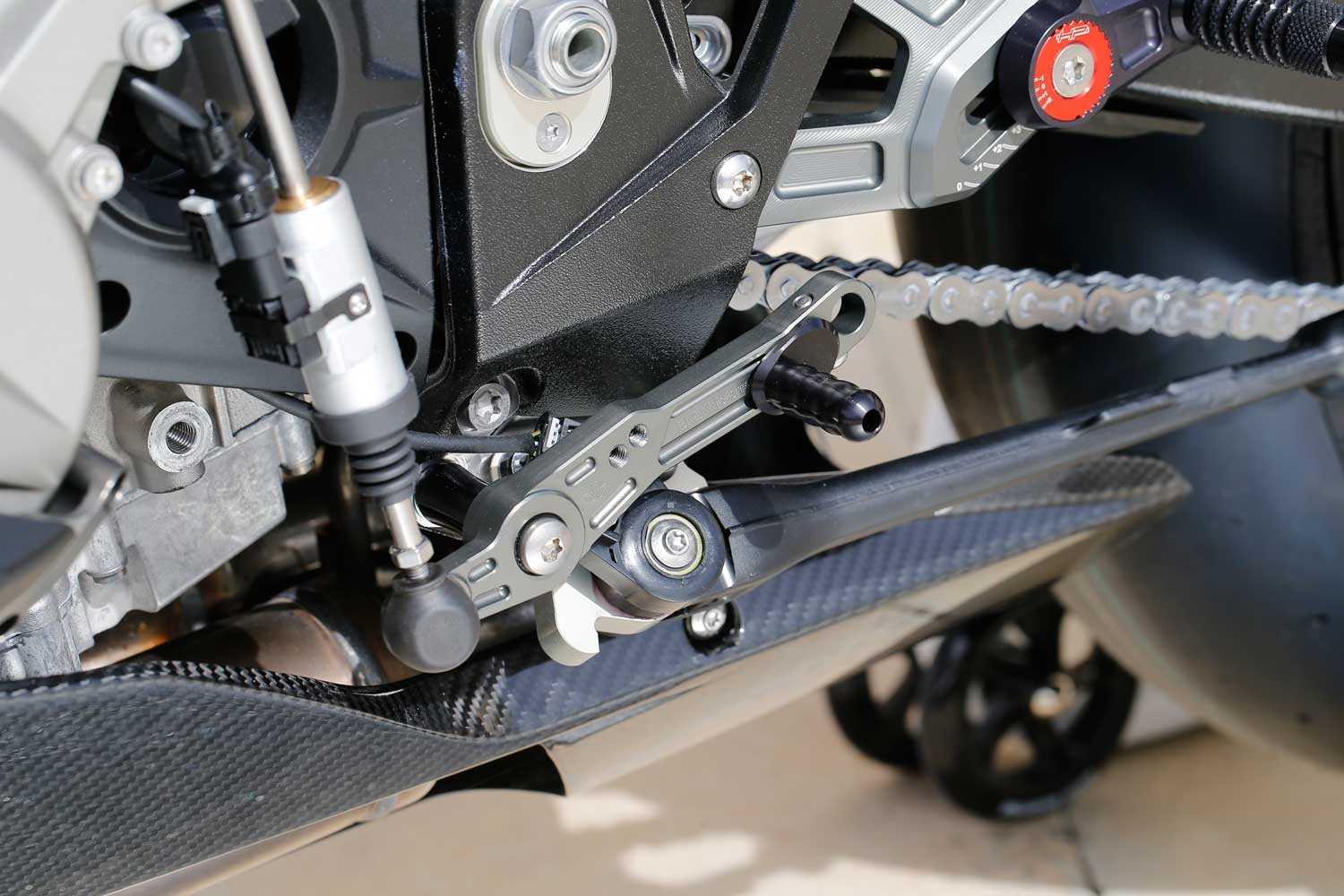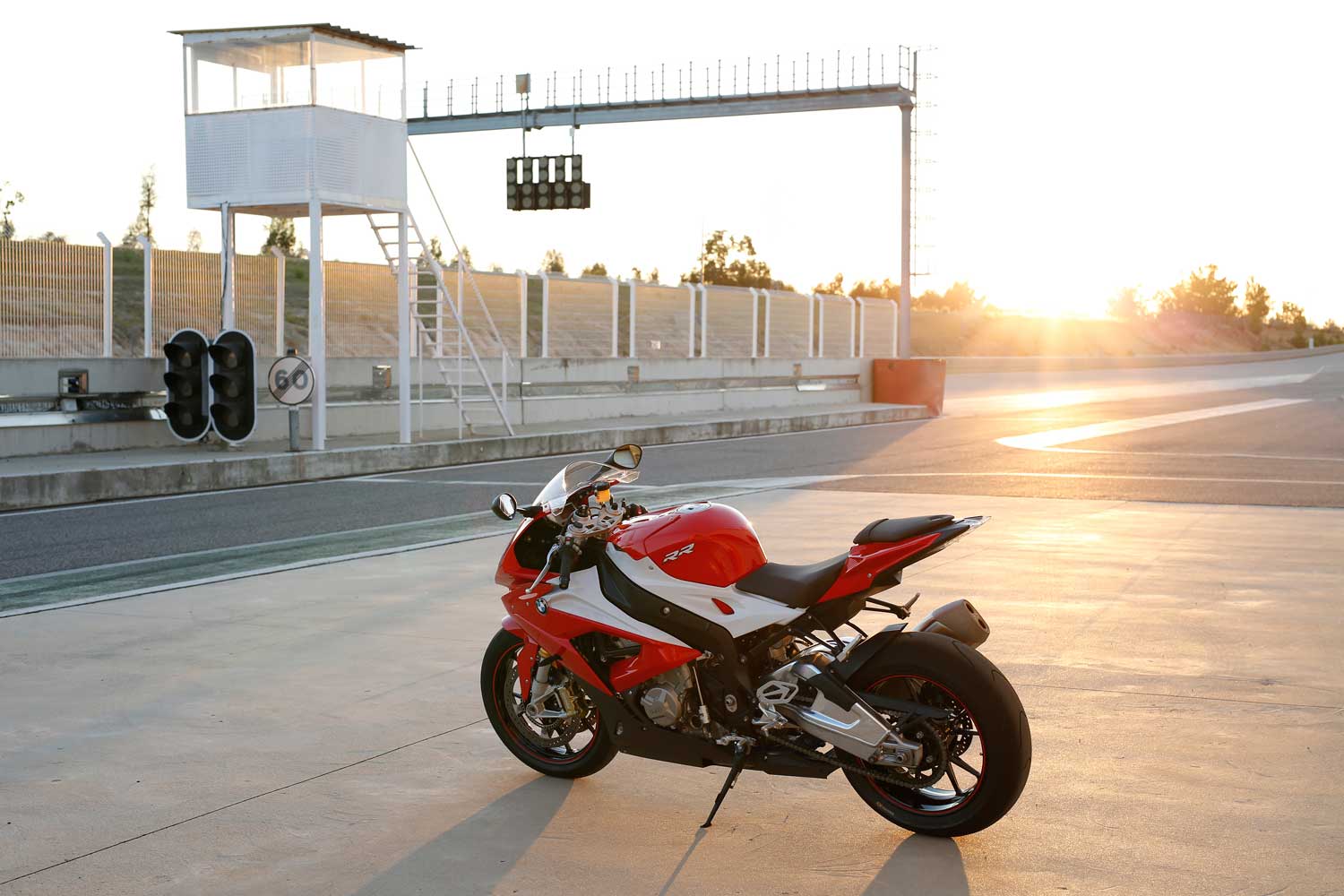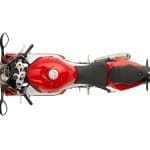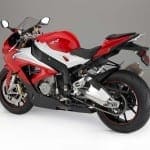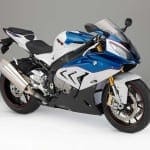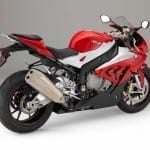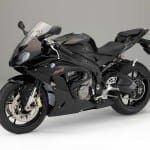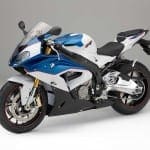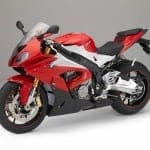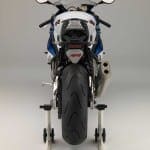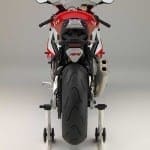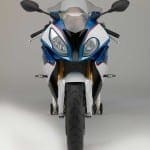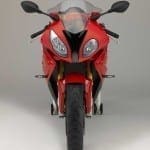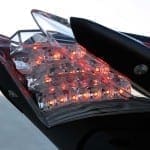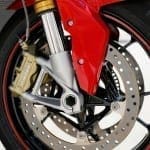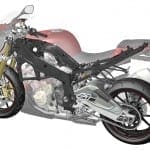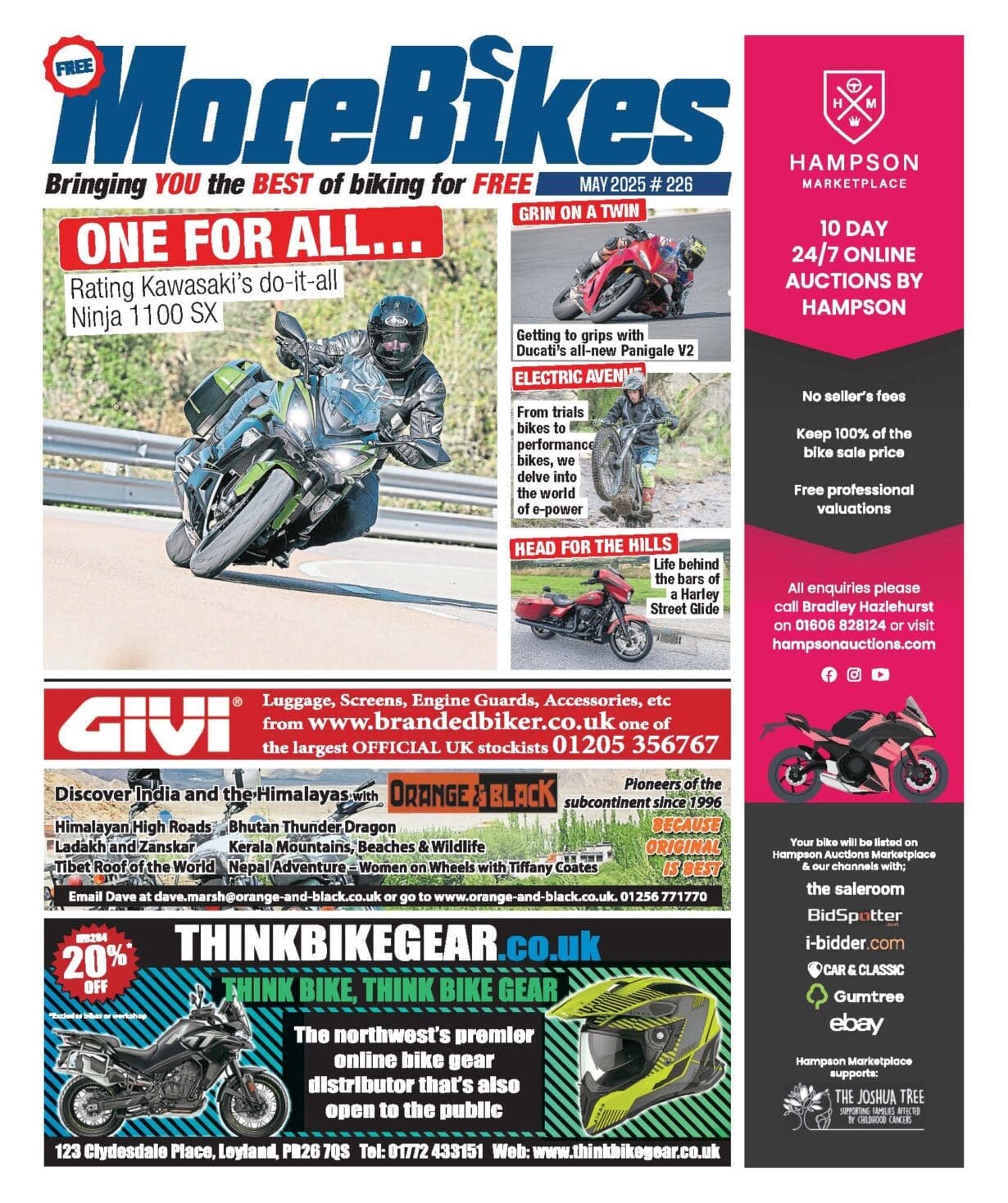2015 BMW S1000RR review | £13,700 | 199bhp@13,500rpm | 83lb-ft@10,500rpm | 999cc liquid-cooled inline-four Tested by Bruce Wilson
Meet the awesome BMW S1000RR. It’s the first production super-sport bike to have the option of cruise control and heated grips. It also has a real-time lean angle display, and an optional World Superbike-style quick-shifter. The updates mean more aggressive styling, more tech, and of course, more power for the Bavarian company’s fifth-best-selling motorcycle.
Tell me about the engine
The S1000RR’s motor now makes a claimed 199bhp – an increase of 6bhp over the previous generation. Torque is now up to 83lb-ft. These improvements were achieved through alterations to the bike’s airbox, the fitment of lighter intake valves, new duct geometry in the cylinder head and a new intake camshaft. A redesigned, 3kg lighter exhaust system sounds distinctively deep and throaty like the old machine, but the motor spins up noticably faster than before. Thomas Steinle – the engine’s developer – told me that besides the increased power, the goal was to make the motor more drivable too, allowing it pull longer and stronger throughout the rev range. This improved torque curve has huge advantages on track, but it also makes road riding much more pleasant.
An ex-works option (it has to be fitted when the new bike is ordered) is the HP Gear Shift Assist Pro – without doubt my favourite accessory on the bike. Rather than just being a quick-shifter to help you going up the ’box, it’s also a seamless down-shifter, meaning you never have to touch the clutch once you’ve got the bike rolling.
What’s the chassis like?
Small but significant changes to the RR’s chassis mean that it now offers better front-end feedback through the 120/70/17 front tyre, and more mechanical traction from the 190/55/17 rear. The steering head angle has been increased by 0.5°, and the swingarm pivot point lowered by 3mm, whilst increasing the wheelbase by 8mm to 1425mm.
Utilising many of the sophisticated electronics first seen on BMW’s HP4 superbike, the new RR comes with 14 stages of traction control settings, and Race-ABS through the four-pot Brembo monobloc calipers and 320mm disks.
You no longer have to use the clutch to select your rider mode, and you can alter the level of traction control simply by touching a button as you ride. You can tweak the suspension settings through Dynamic Damping Control (DDC), where optional ‘Slick’ and ‘User’ modes complement the standard ‘Rain’, ‘Sport’ and ‘Race’ setups.
Despite the DDC suspension, you still have to adjust the preload on the 46mm telescopic forks manually; I reduced mine to just two rings on the front which made a big difference to corner entry, getting me on the gas sooner and harder.
As I write this, there’s no other production bike with this level of control, and it was understandable why every journalist was raving about the system when we stopped for lunch. If there were ever a downside to rider aid technology, it would have to be its all-controlling nature, but because you can alter everything, that’s simply not the case on the RR.
Should I buy one?
The RR always stood out for being generous in the leg department, but this model’s higher, sportily angled pegs feel more in line with the race pretentions. There’s still a long and relaxed reach to the bars, which have been slightly widened for comfort, while the taller screen’s been designed to reduce rider fatigue.
Smack in the centre of the BMW’s dash is the live-fed lean angle display, where data is stored until the ignition is switched off. The system also records brake pressure, and the volume of torque resisted by the traction control system. A few years back this kind of info would have been available only to the elite of the race teams, but now it’s here for everyone to enjoy. A part of me thinks it’s a bit overkill for the road, but this bike’s race-focused performance credentials are given a major boost with the technology.
The quick-shifter’s ability to render the clutch almost redundant made riding the S1000RR akin to a step-through on steroids. It’s ridiculously easy to enjoy, and while I had to recalibrate my mind to the sensitivity of the ride-by-wire system; and it’s clearly aimed at the track, it’s a very capable machine with the chassis design and technology in place to cope with the less-than-ideal surfaces the UK roads can offer.
So what’s it like to ride?
Heading out onto the MonteBlanco circuit, I was taken aback by the speed at which the BMW pulled itself up to crazy speeds, and how agile it felt. The RR is a big bike, (though it weighs 2kg less than the 2014 Yamaha R1), and carves its way into apexes without any drama. My only complaint was the tendency to run in too deep on corner entry, which I sorted by pressing a few buttons to increase the compression on the rear shock, speeding up the rebound at the same time. The changes made a big difference, and I was chuffed to think I didn’t even need to touch a tool to make this bike a whole lot better for my riding style.
It had taken me a day to dial in, but come the fifth and final session of the day, I was in my element on the truly inspiring litre-bike, posting consistently fast times and never really feeling all that vulnerable whilst doing so. I can think of plenty of other bikes which would have tied themselves in knots around the Spanish circuit, but the RR just seemed to take everything in its stride.
The DDC suspension was exceptional, comfortably gobbling up the rough and bumpy surface of the track. Likewise, the brakes deserve a great deal of praise. Every lap required hard deceleration from 175mph to 40mph in order to make the tight turn into the first corner. The Race-ABS package proved more than capable of this challenge, providing fantastic power and great feel, aided massively by the self-blipping down-shifter.
To say I came away completely in love with the RR would be an understatement, and hearing it’s soon to be confirmed price should be just over £12,000 makes the package even more attractive.
Tech Spec
Price: Estimated around £12,500 for standard model or £14,500 for the Sport package, which will include the two extra riding modes and Sports (not forged) wheels.
Engine: 999cc, liquid-cooled, inline-four
Power: 199bhp (146kW)@13,500rpm
Torque: 83lb-ft (113Nm)@10,500rpm
Kerb weight: 204kg
Seat height: 815mm
Tank size: 17.5 litres

